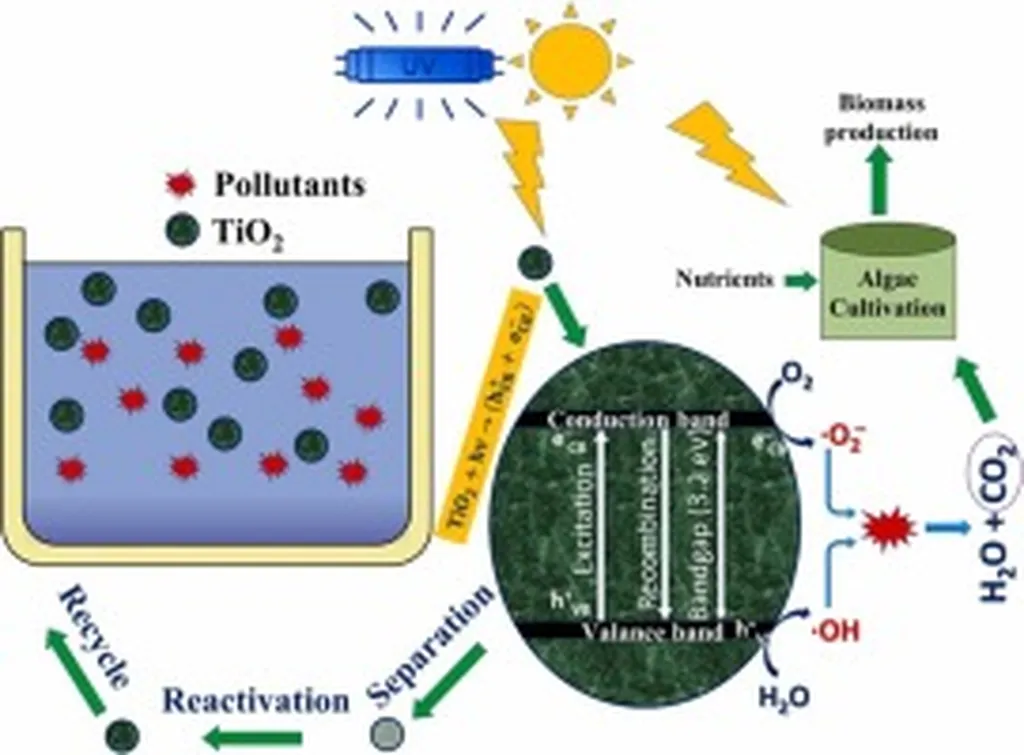In the quest for cleaner environments and sustainable energy solutions, a team of researchers led by Xia Zhang from the Hubei Key Laboratory of Radiation Chemistry and Functional Materials at Hubei University of Science and Technology has made a significant stride. Their work, published in the journal *Materials Letters: X* (translated as *Materials Letters: New*), focuses on enhancing the photocatalytic performance of titanium dioxide (TiO2) through selenium modification, a breakthrough that could revolutionize sewage treatment and energy utilization.
TiO2 is a well-known photocatalyst, but its practical applications have been limited by its inability to harness visible light efficiently. Enter Zhang’s team, who have developed a novel method to modify TiO2 with selenium (Se) using a sol-gel process. This method employs butyl titanate as the titanium source and triethanolamine (TEA) or iminodiacetic acid (IDA) as hydrolysis inhibitors. The result is a Se-doped TiO2 photocatalyst that shows superior performance under visible light conditions.
“Our research demonstrates that Se doping can significantly enhance the photocatalytic activity of TiO2,” Zhang explains. “Under optimal conditions, we achieved a 62.89% degradation rate of malachite green, a common industrial dye, using a Se doping rate of just 0.5%.”
The enhanced performance is attributed to two key factors: an increased specific surface area and a narrowed energy bandgap, both induced by the Se doping. This narrowing allows the modified TiO2 to absorb visible light more effectively, making it a promising candidate for solar-driven environmental applications.
The implications for the energy sector are substantial. Traditional sewage treatment methods are energy-intensive and often rely on non-renewable resources. By utilizing solar energy, the Se-modified TiO2 photocatalyst offers a sustainable and cost-effective alternative. “This technology has the potential to transform sewage treatment processes, making them more efficient and environmentally friendly,” Zhang adds.
The research also opens up new avenues for further exploration. Future studies could focus on optimizing the doping process, exploring other dopants, and scaling up the production of Se-modified TiO2. As the world continues to seek innovative solutions to environmental challenges, this breakthrough brings us one step closer to a cleaner, more sustainable future.
In the words of Zhang, “Our work is just the beginning. We hope that our findings will inspire further research and development in this exciting field.” With the publication of this study in *Materials Letters: X*, the stage is set for a new era of advanced photocatalytic technologies.

